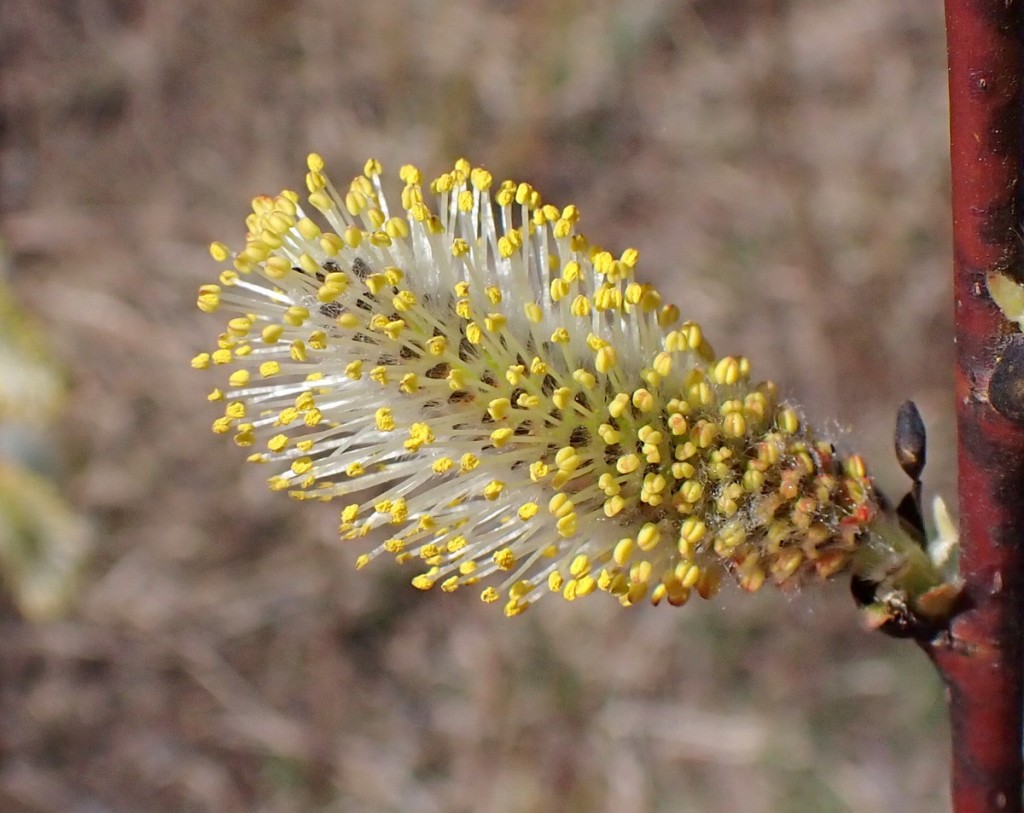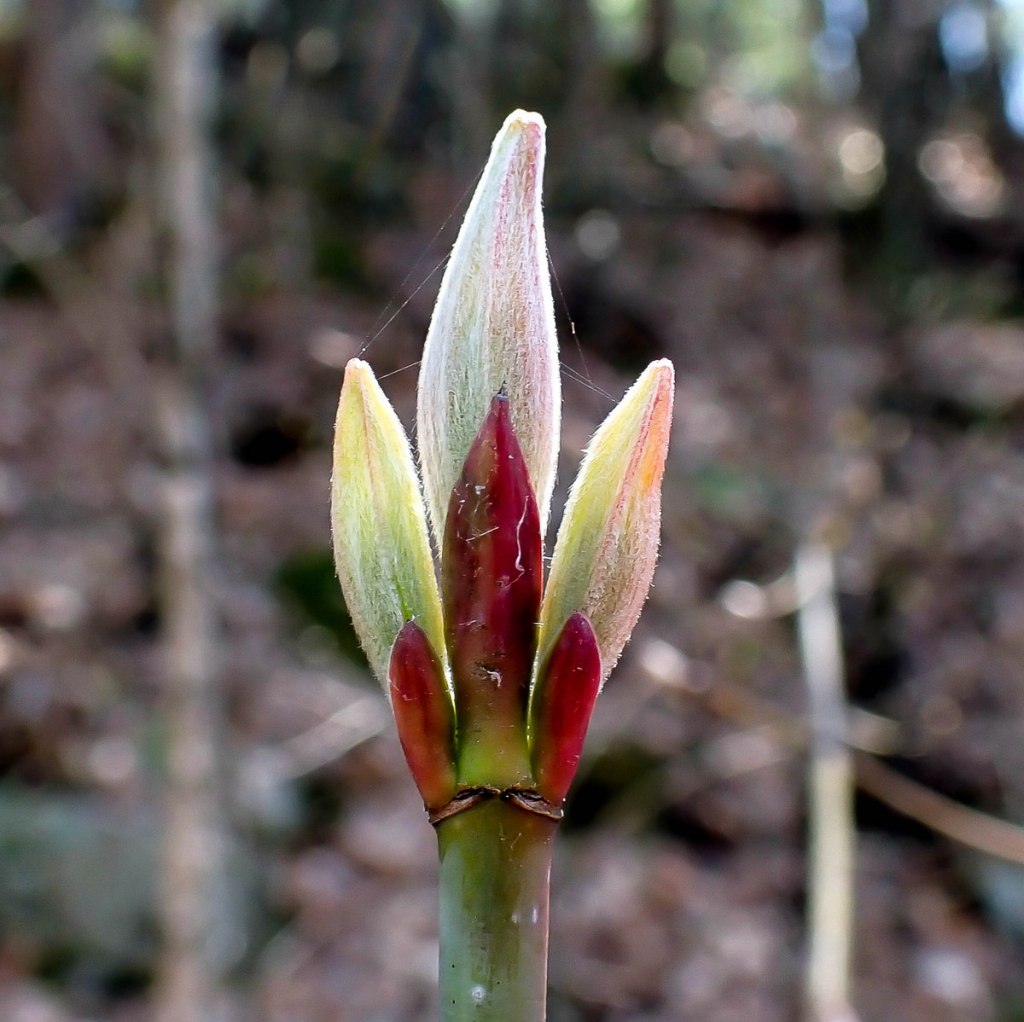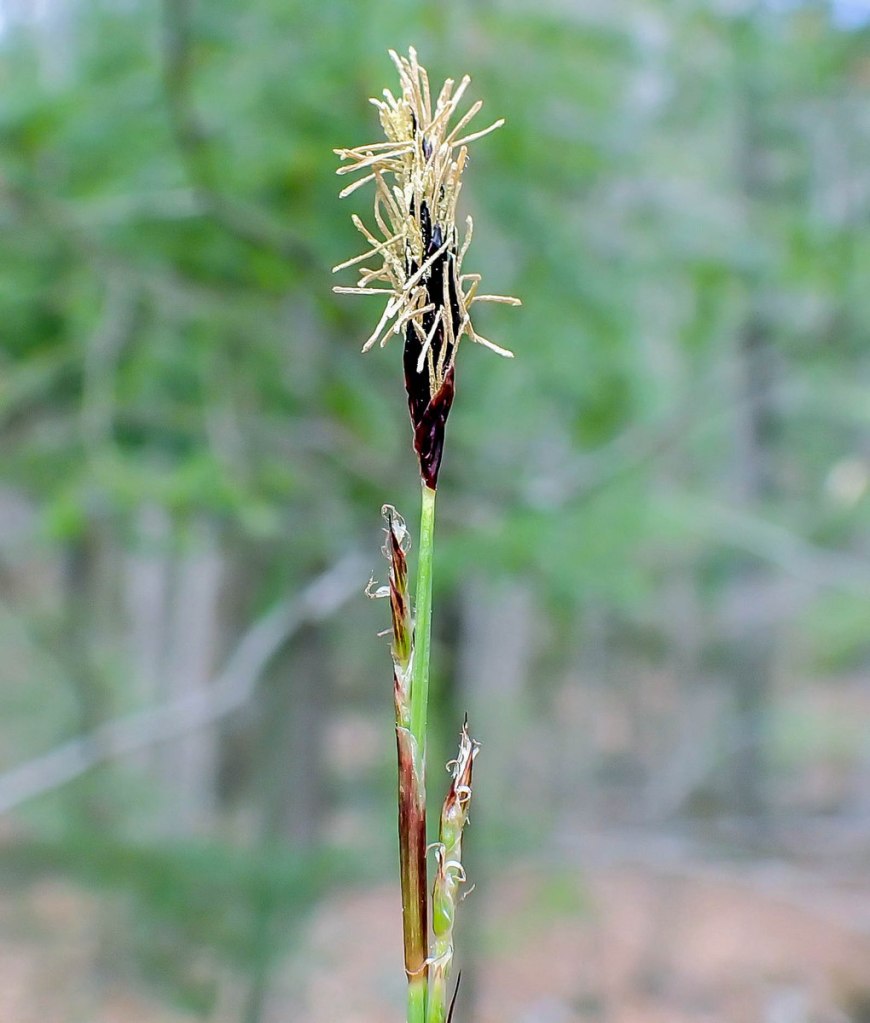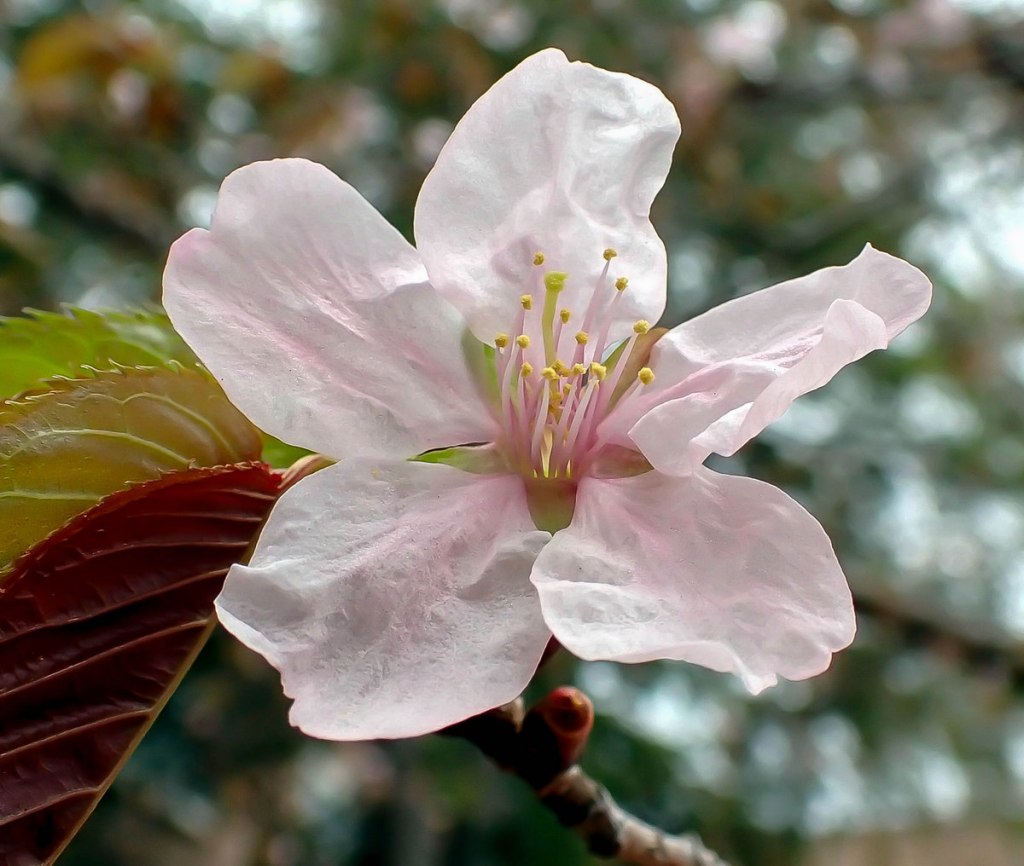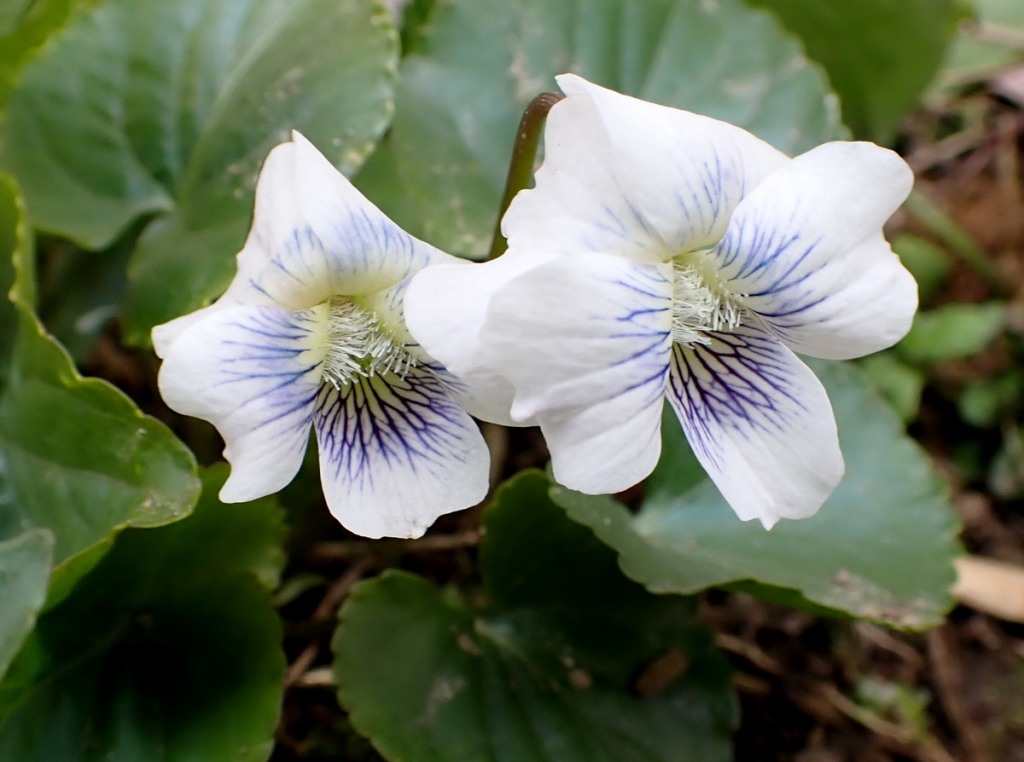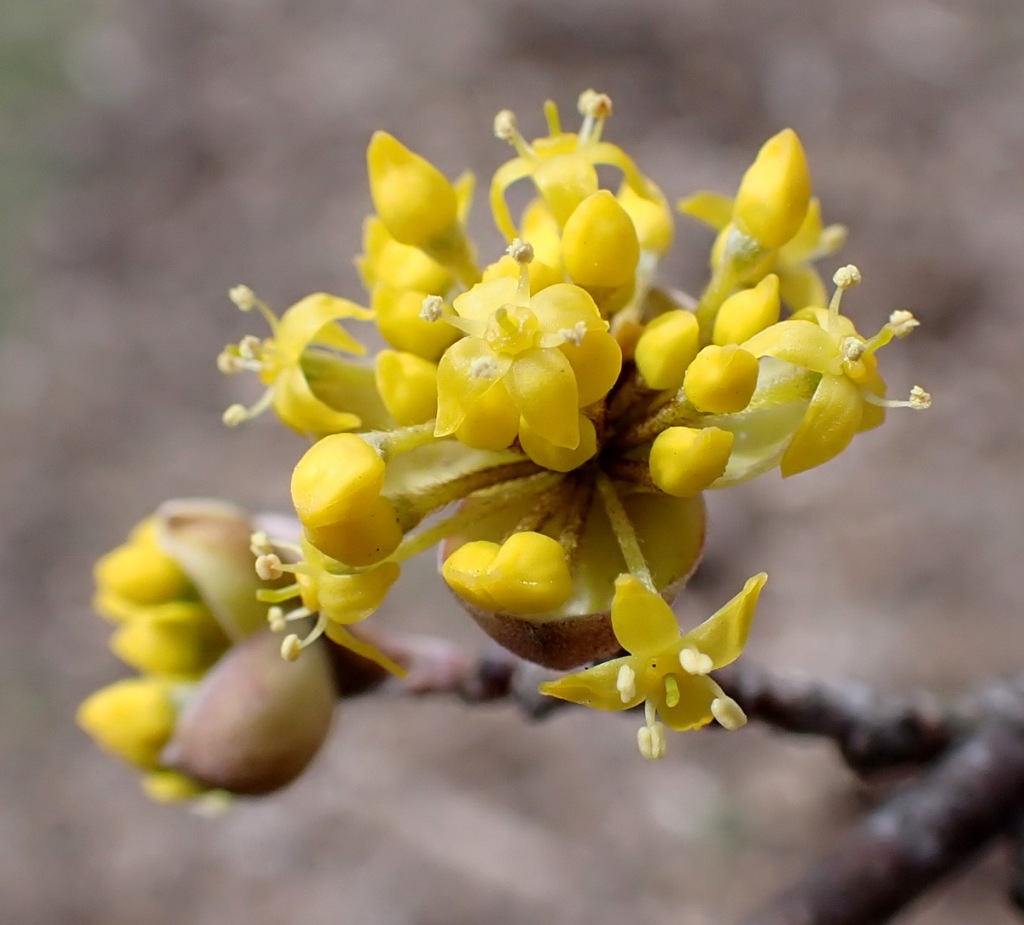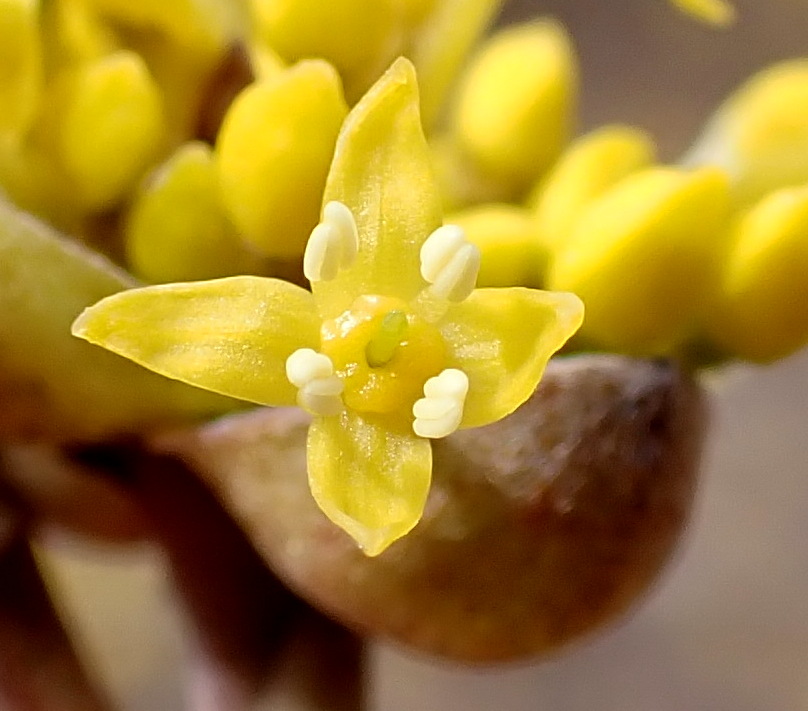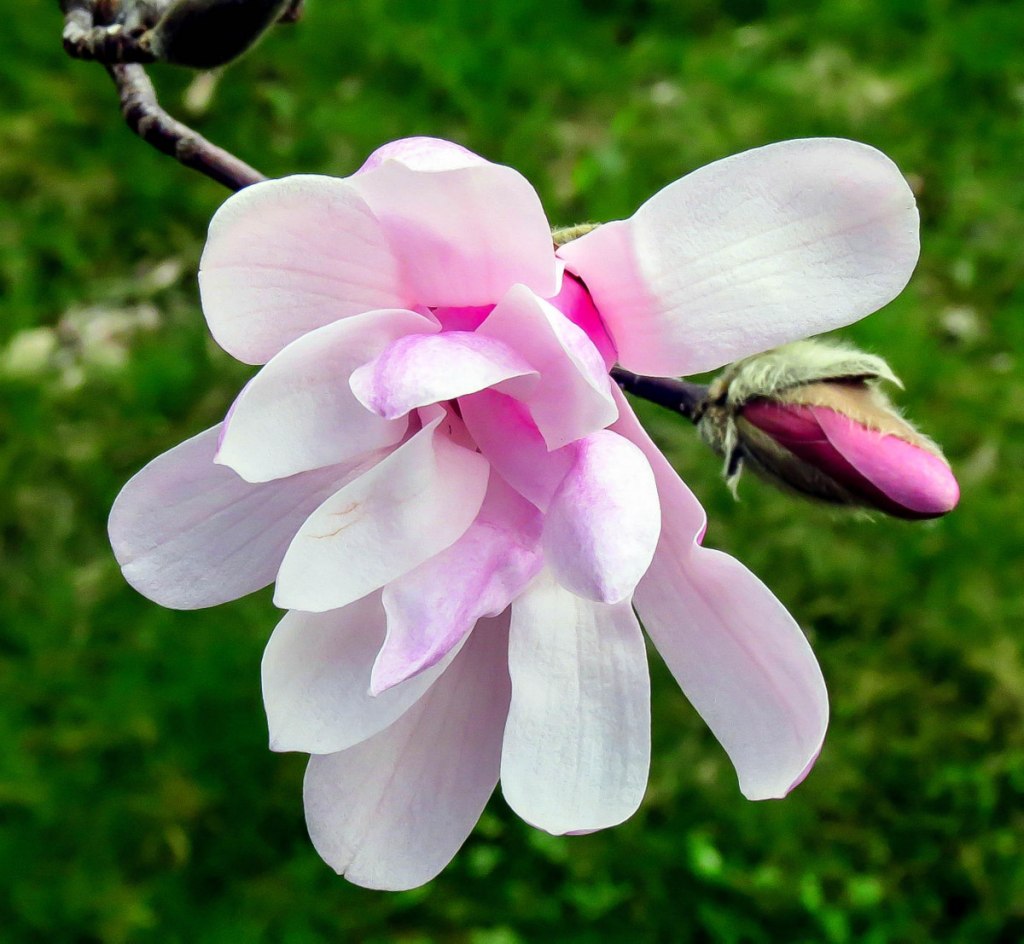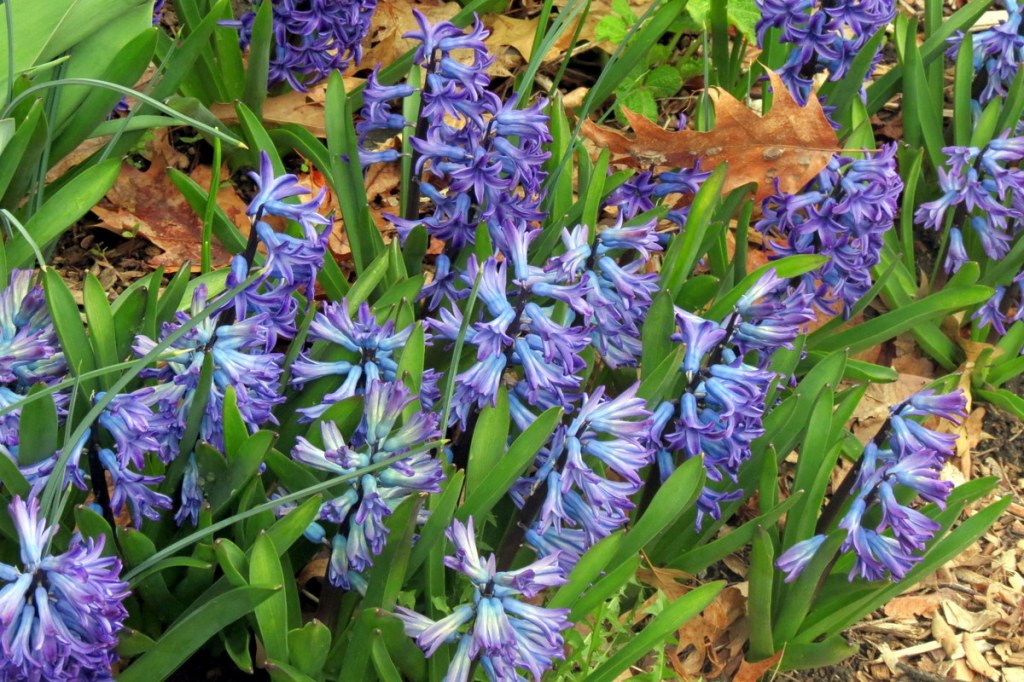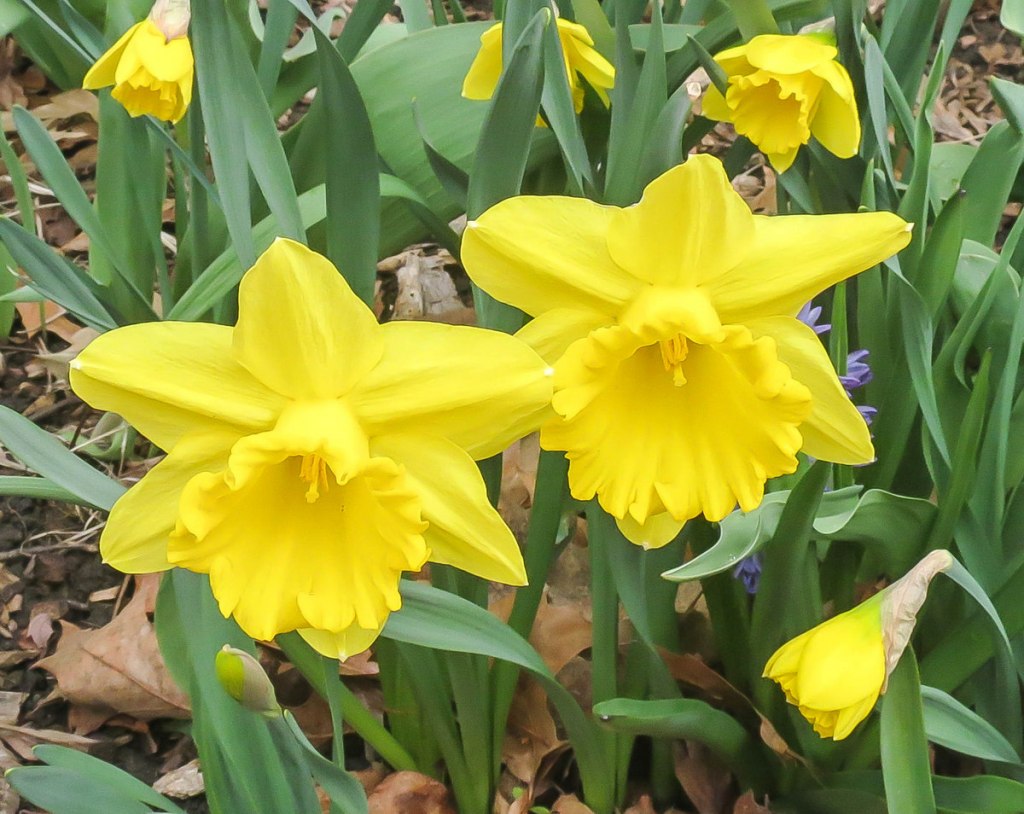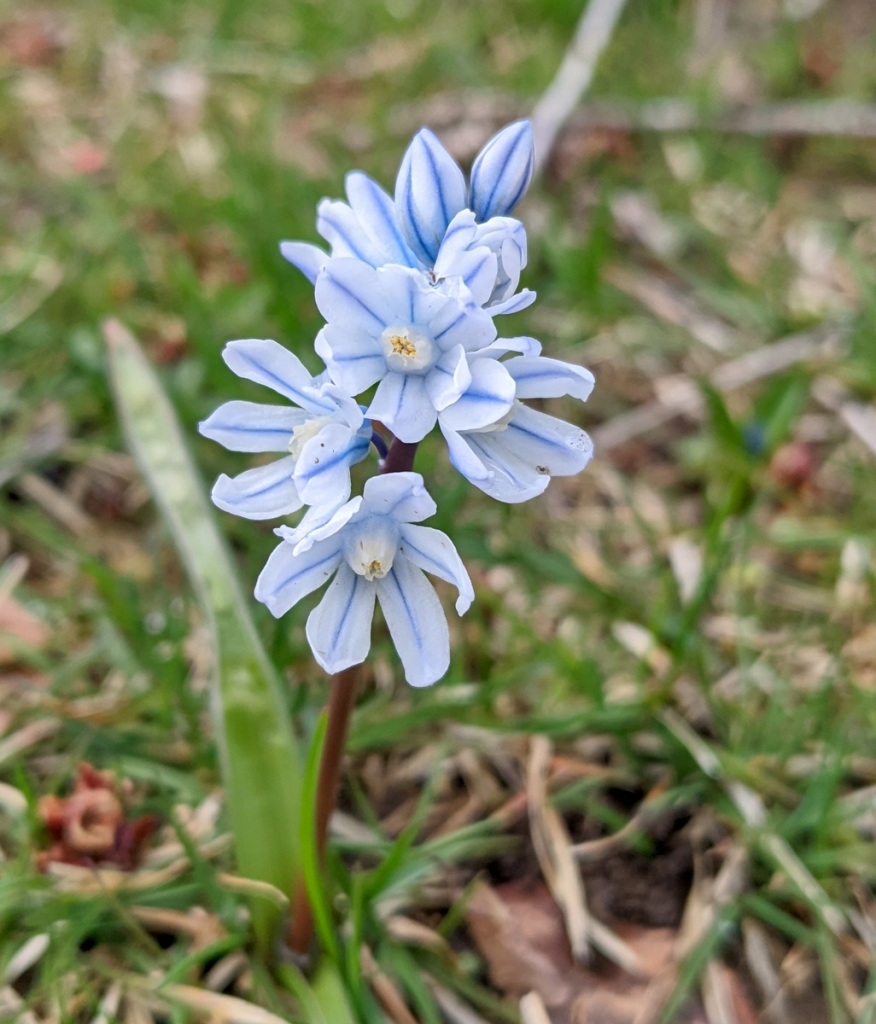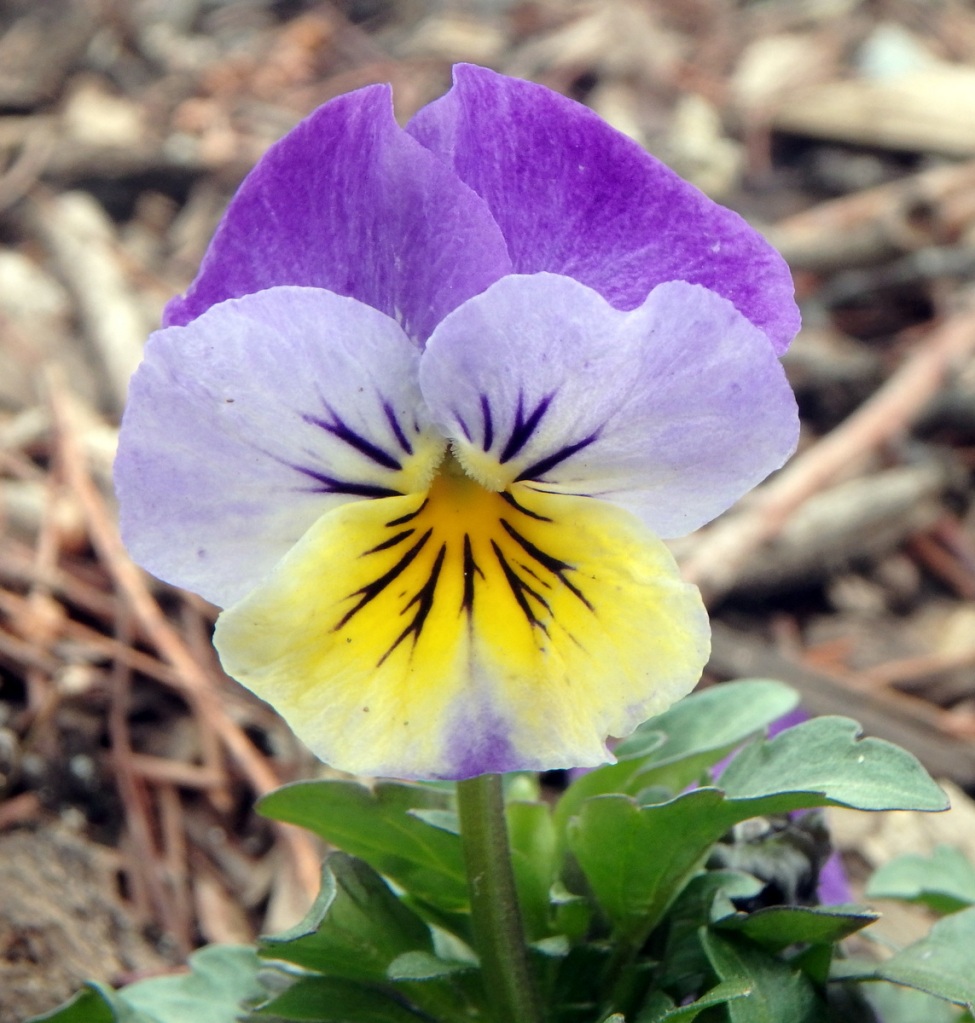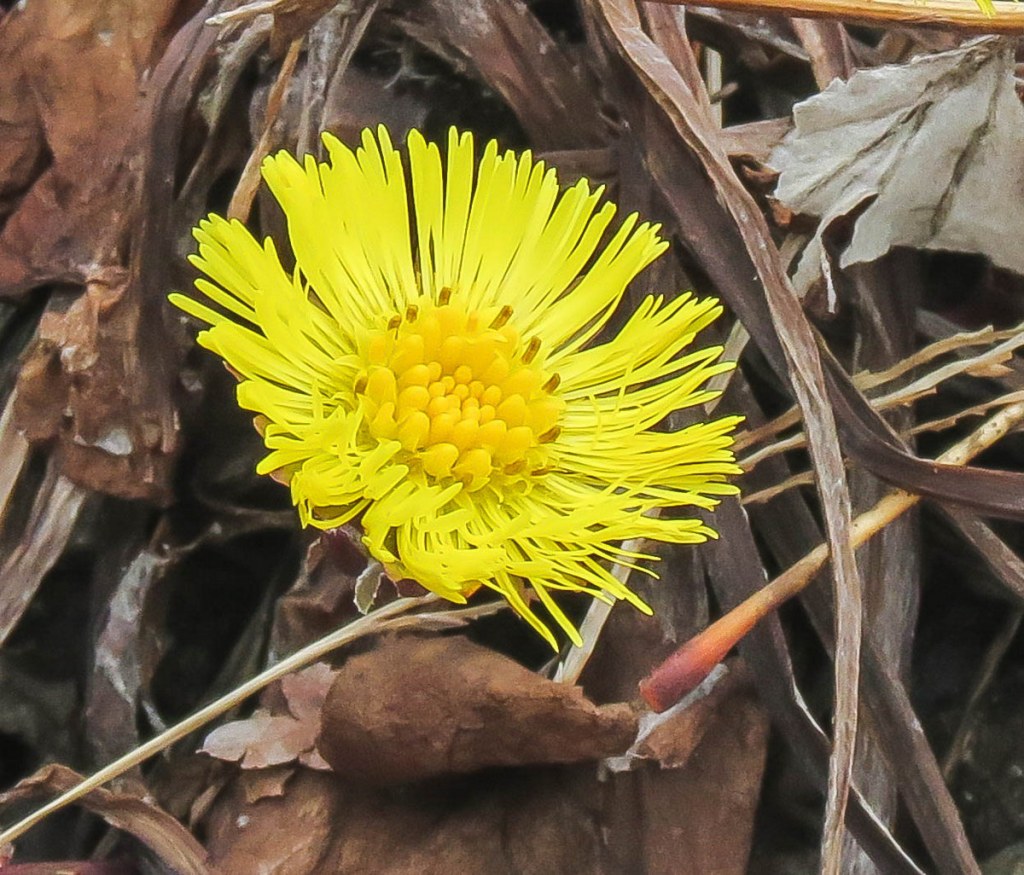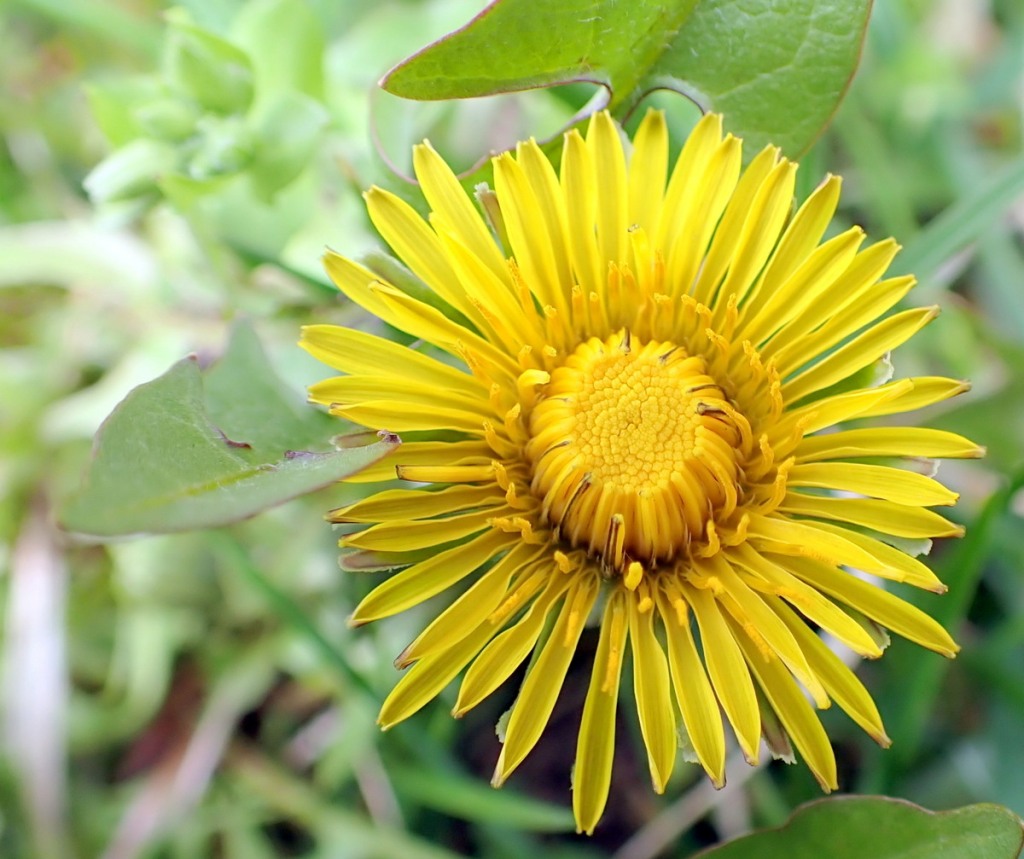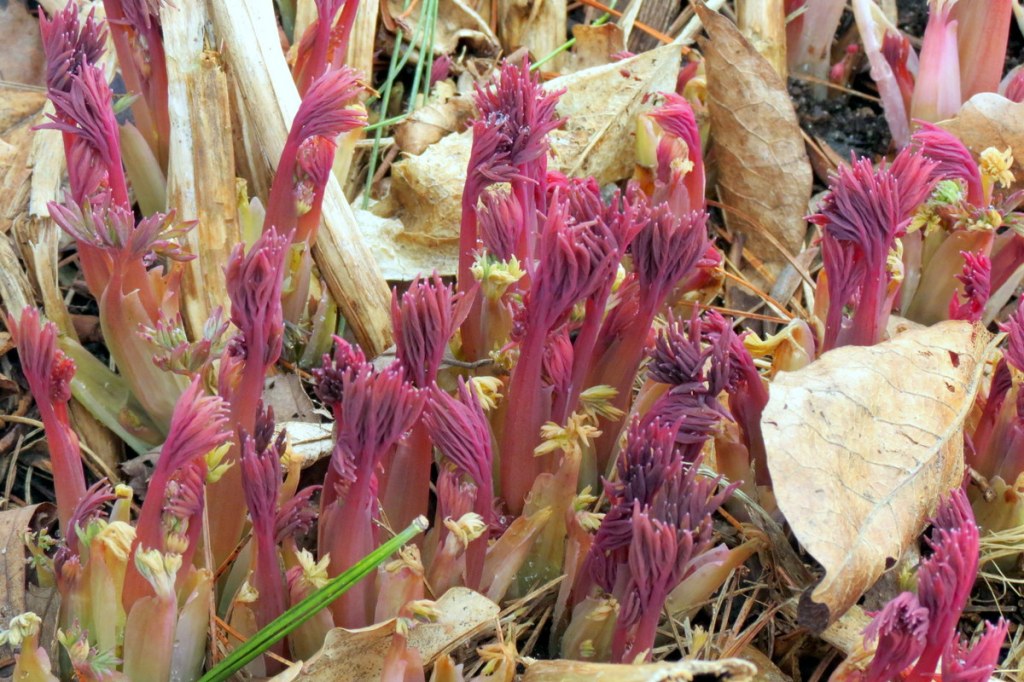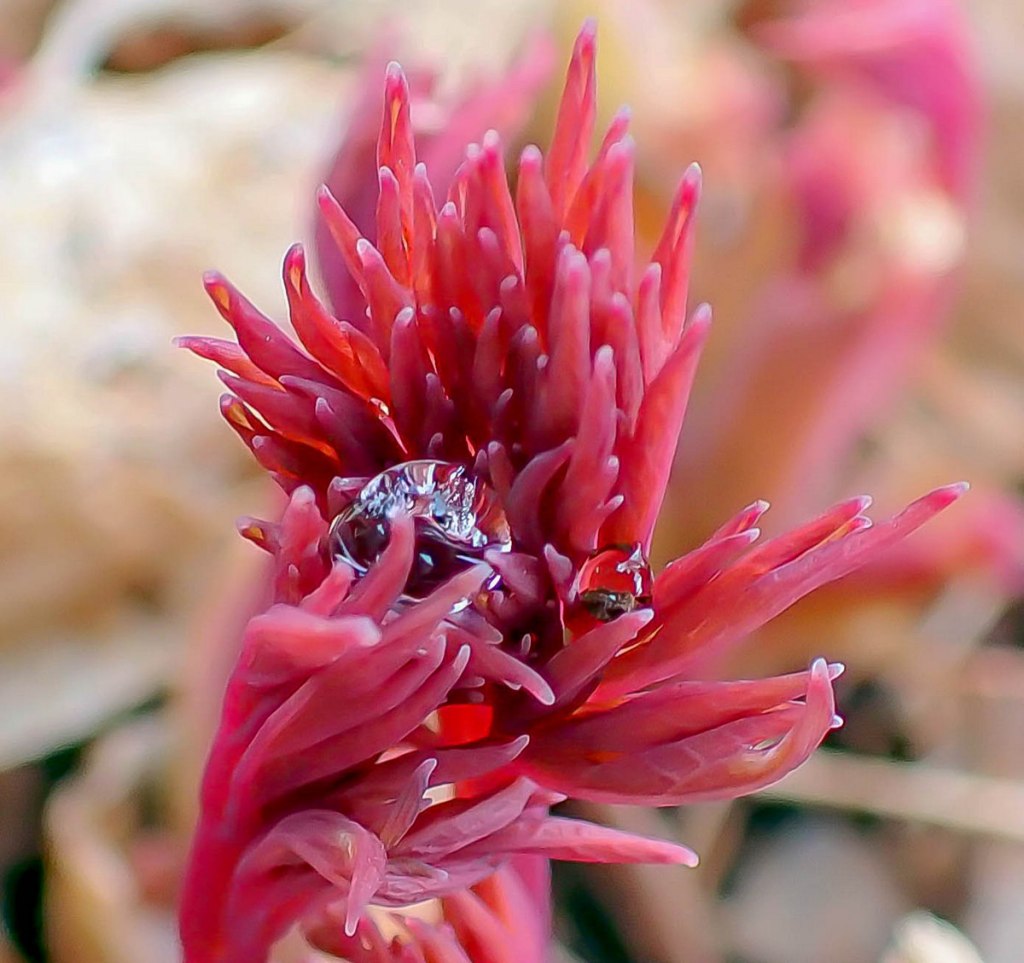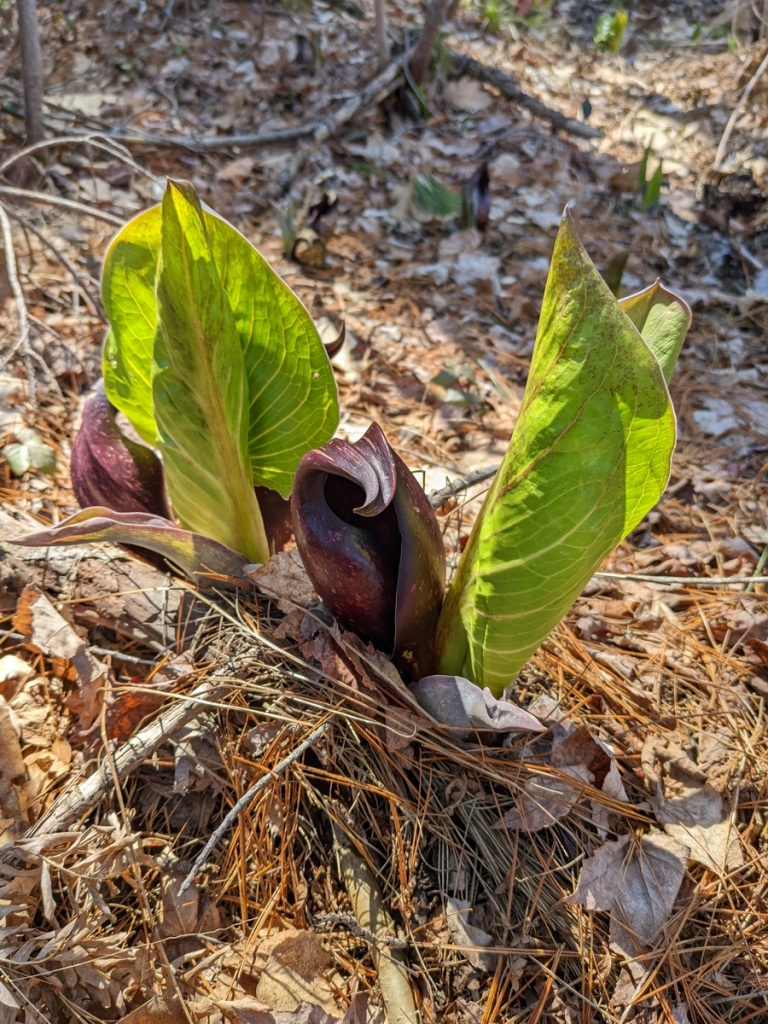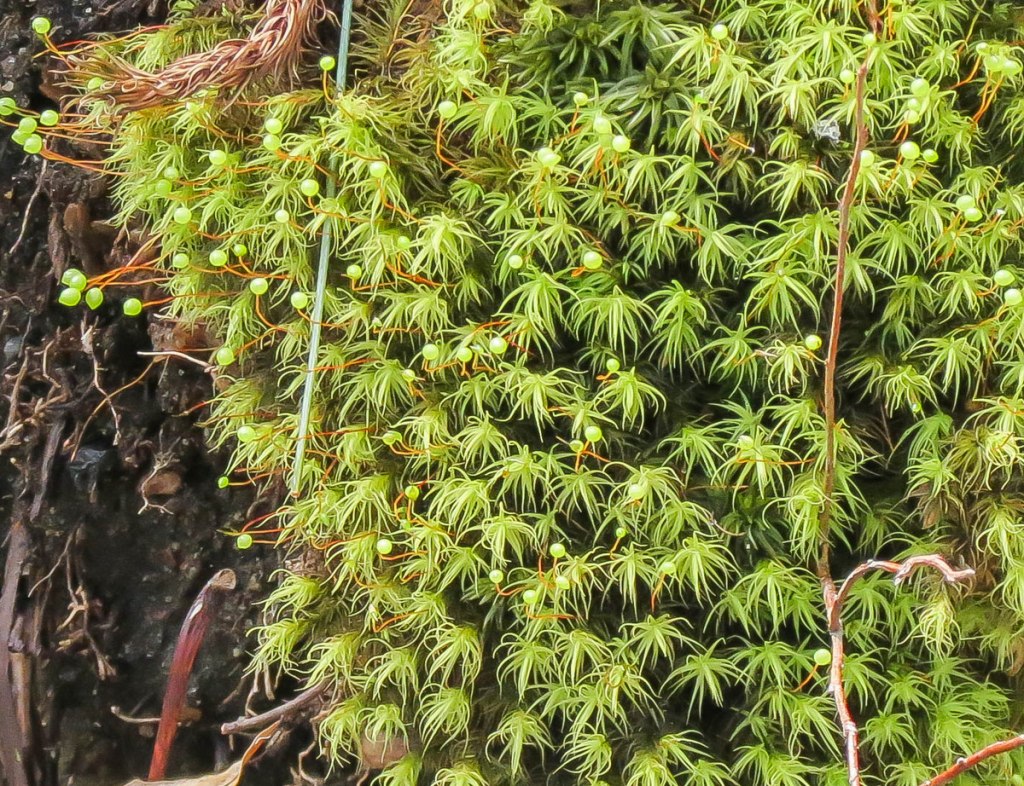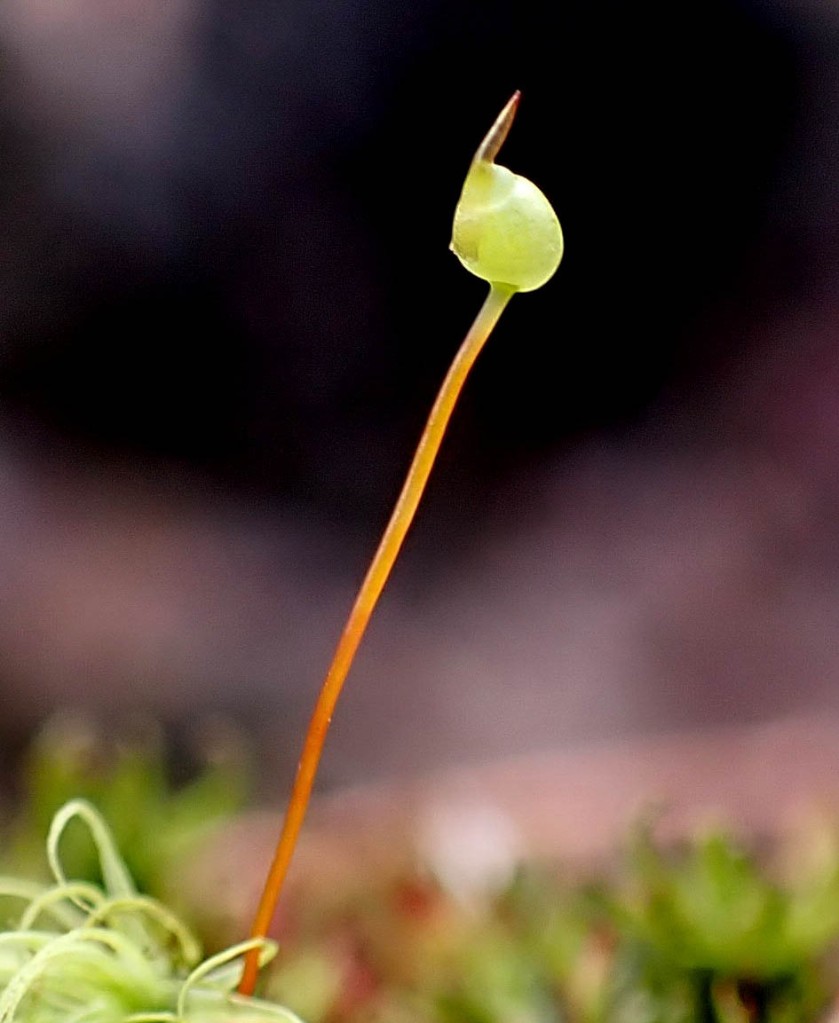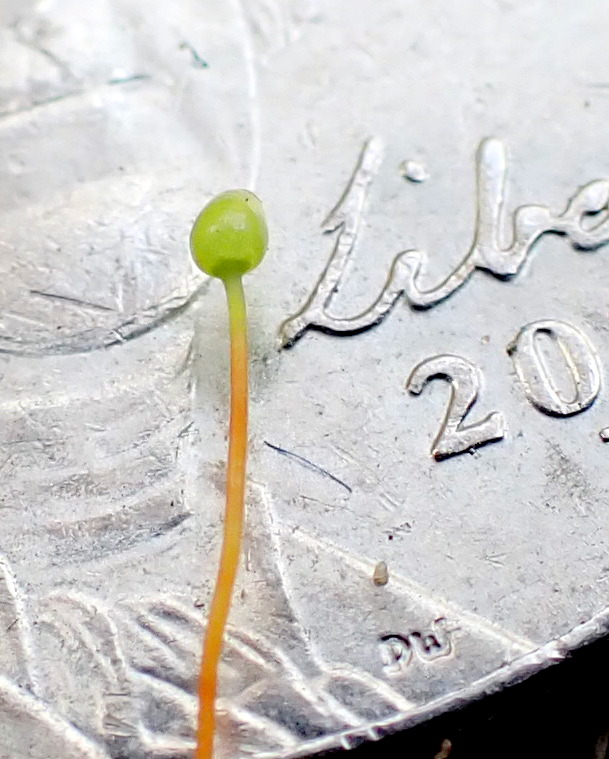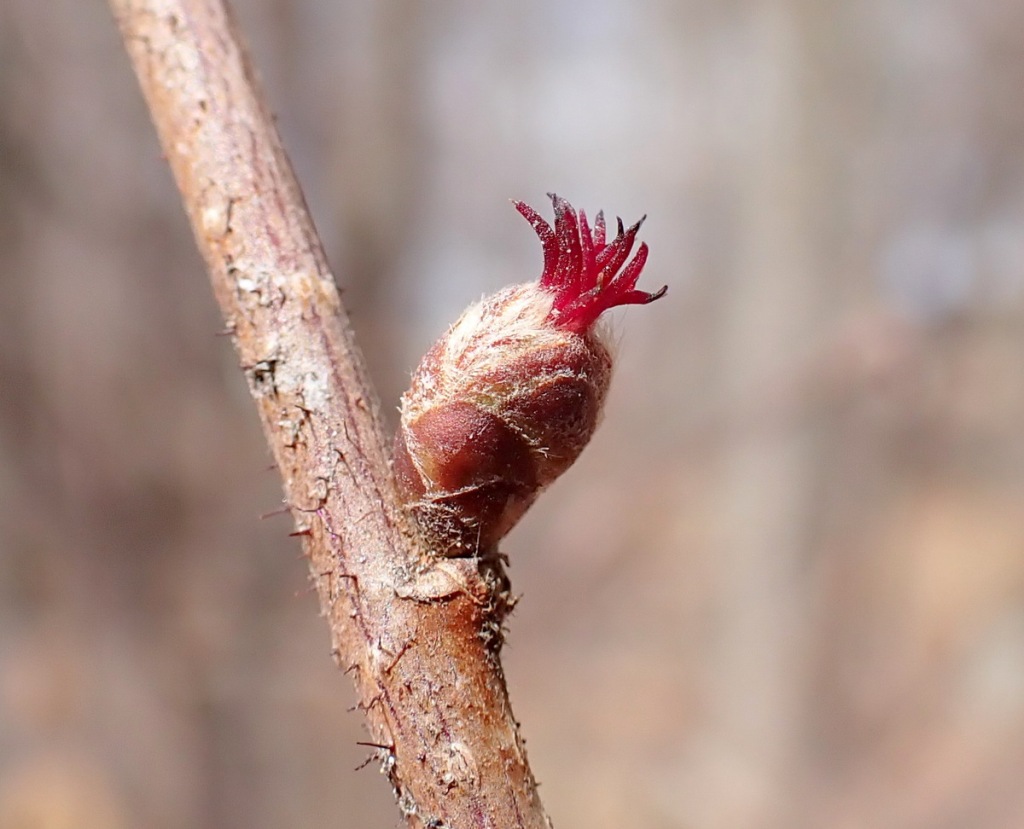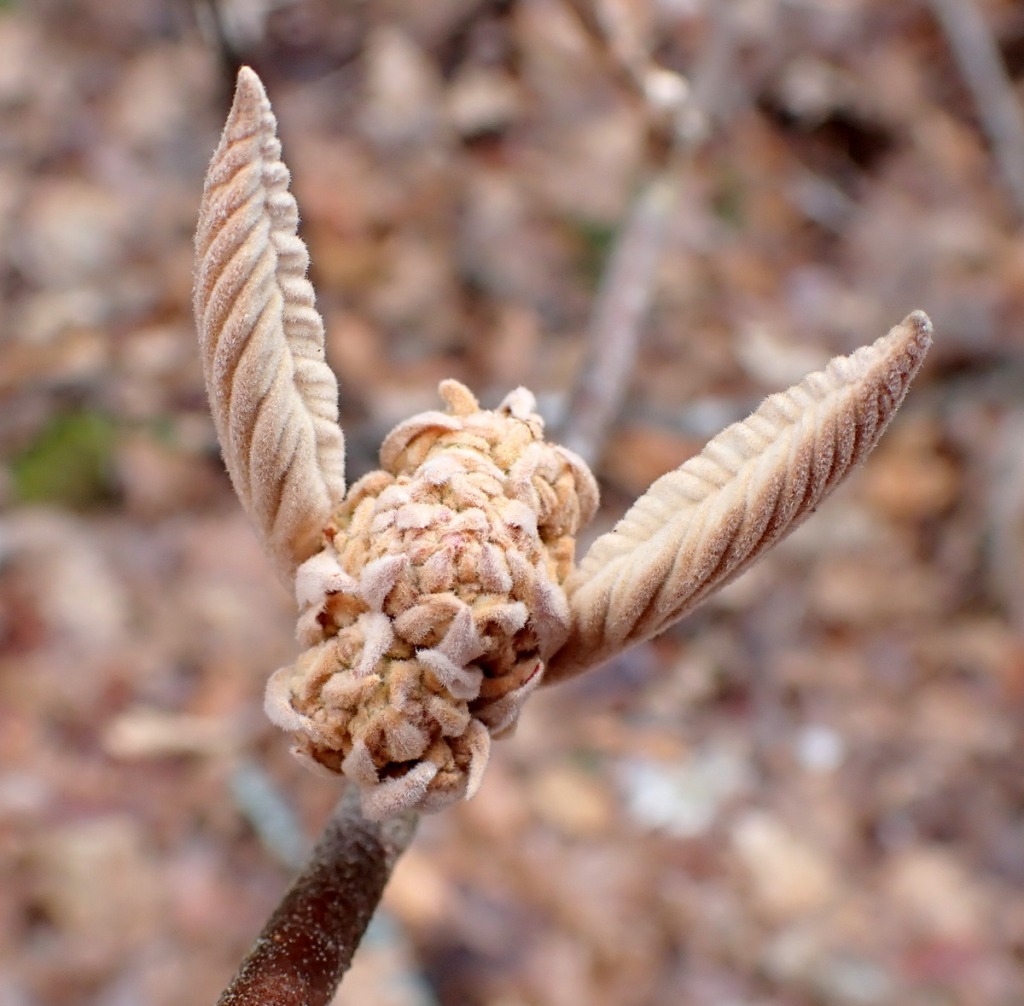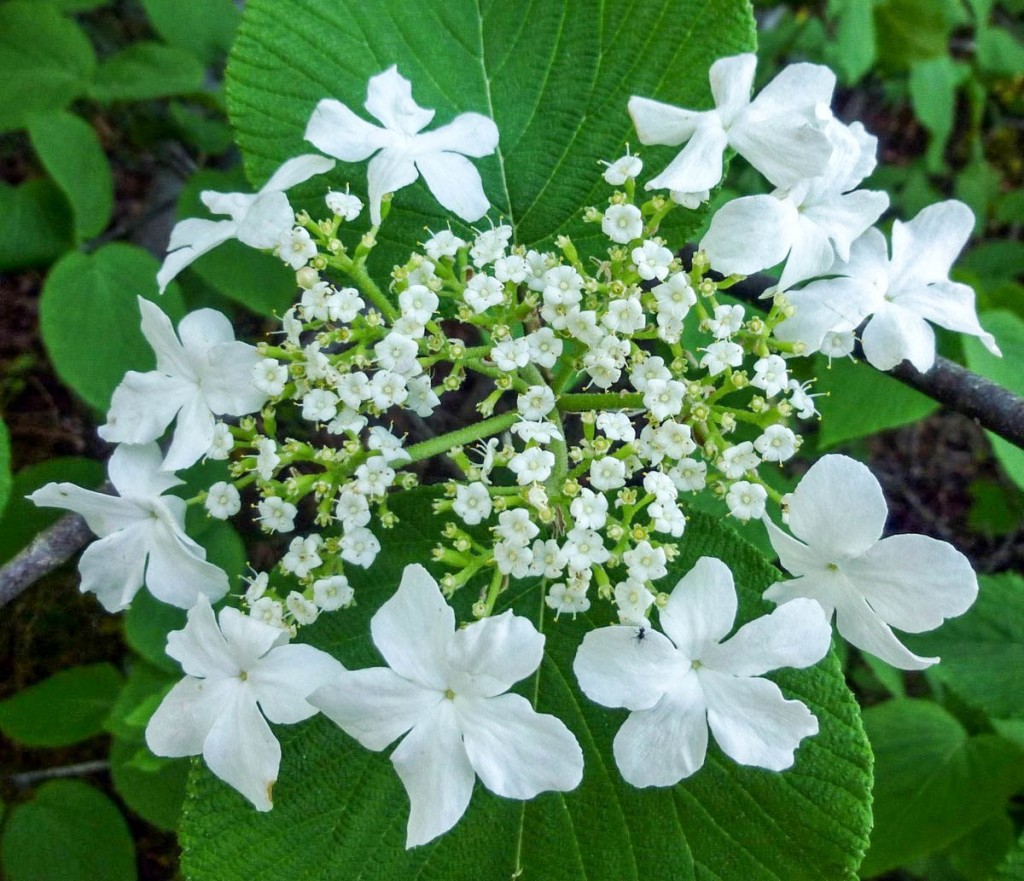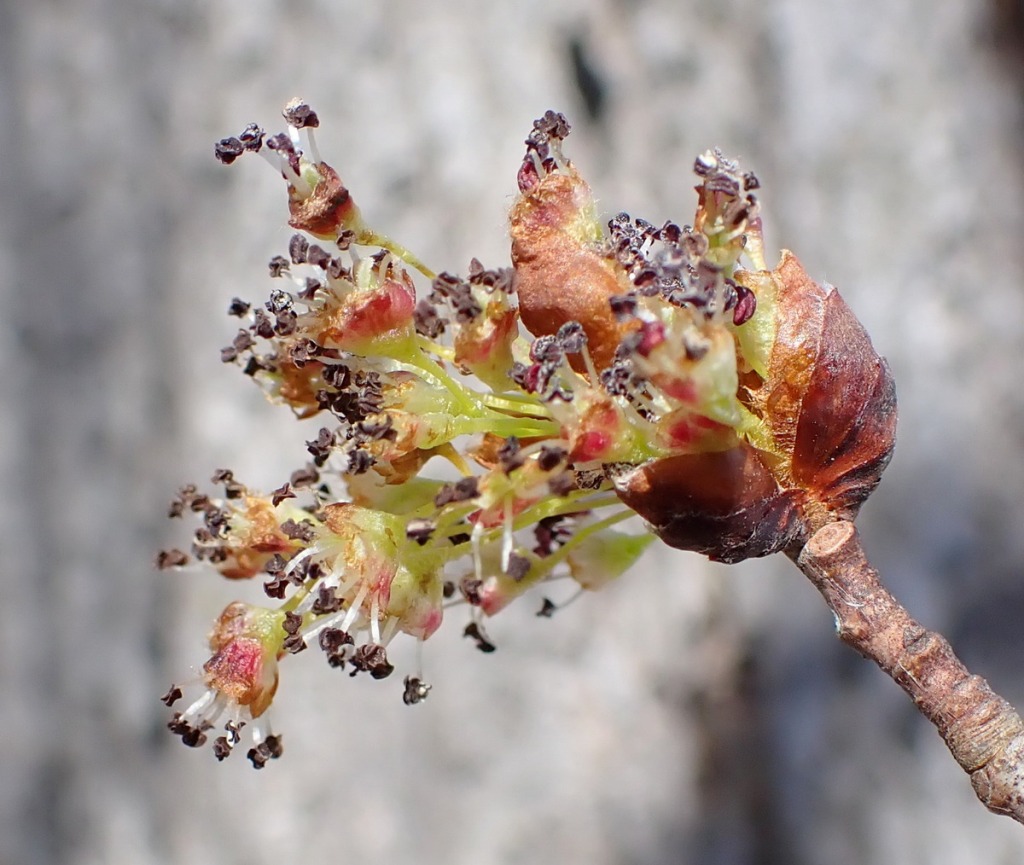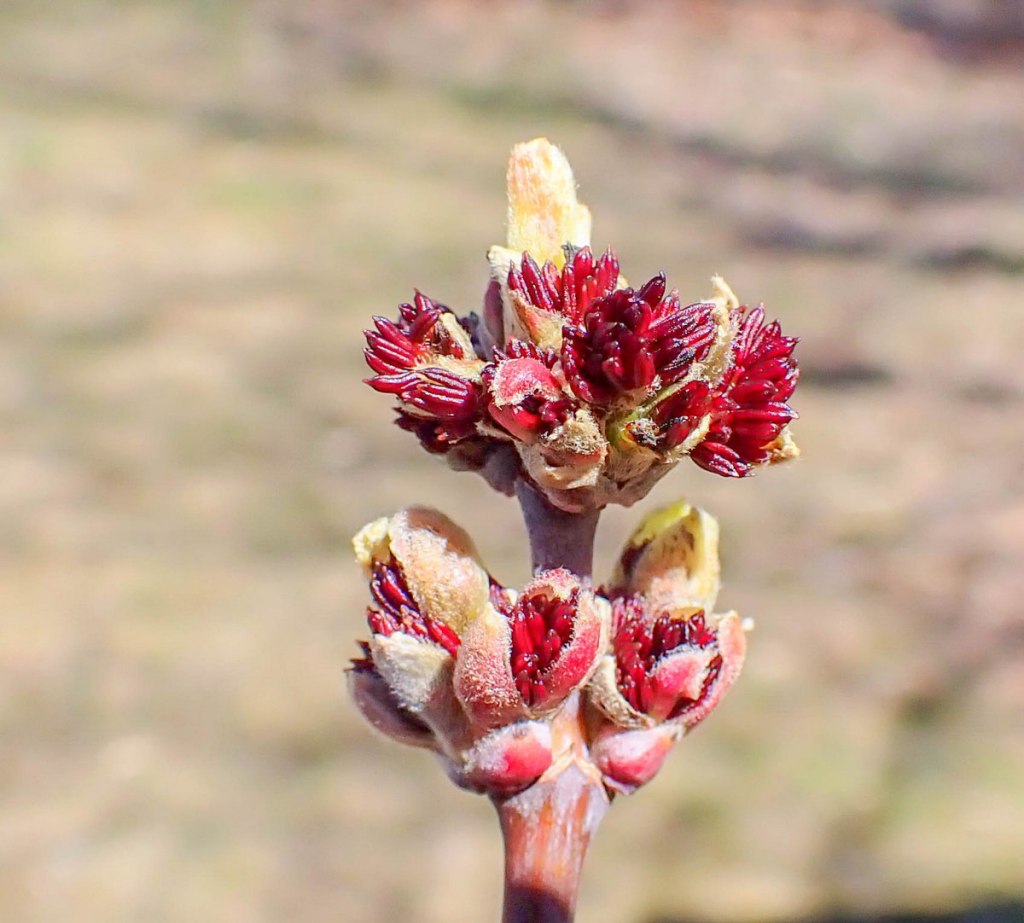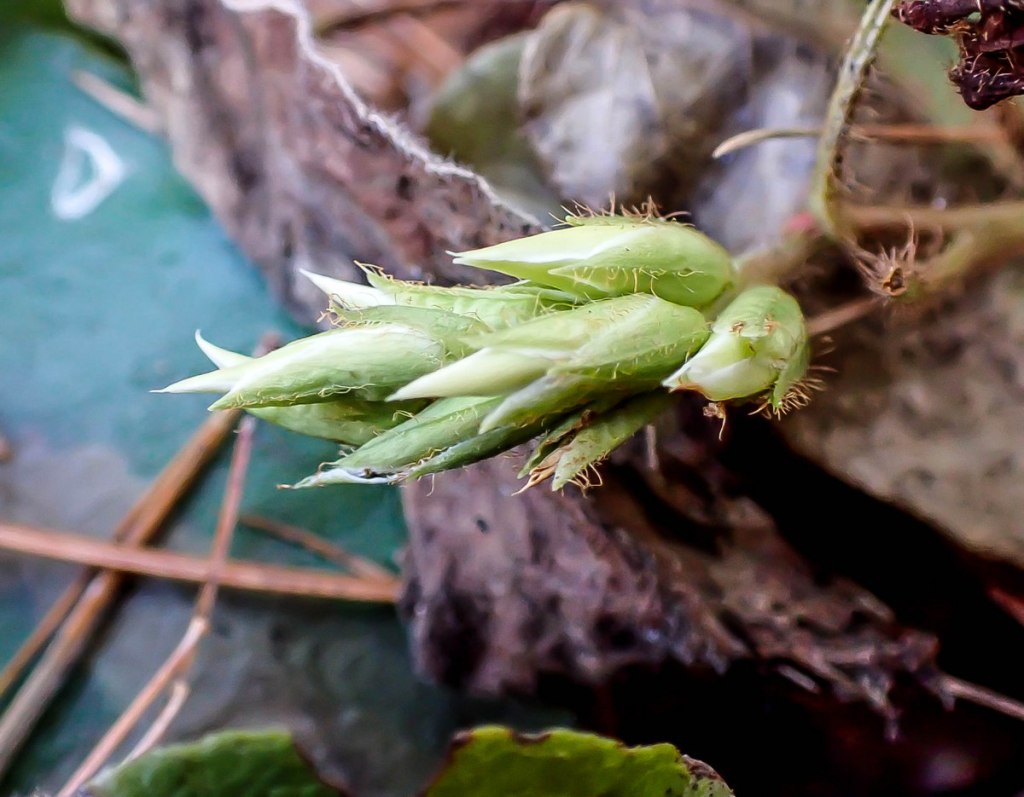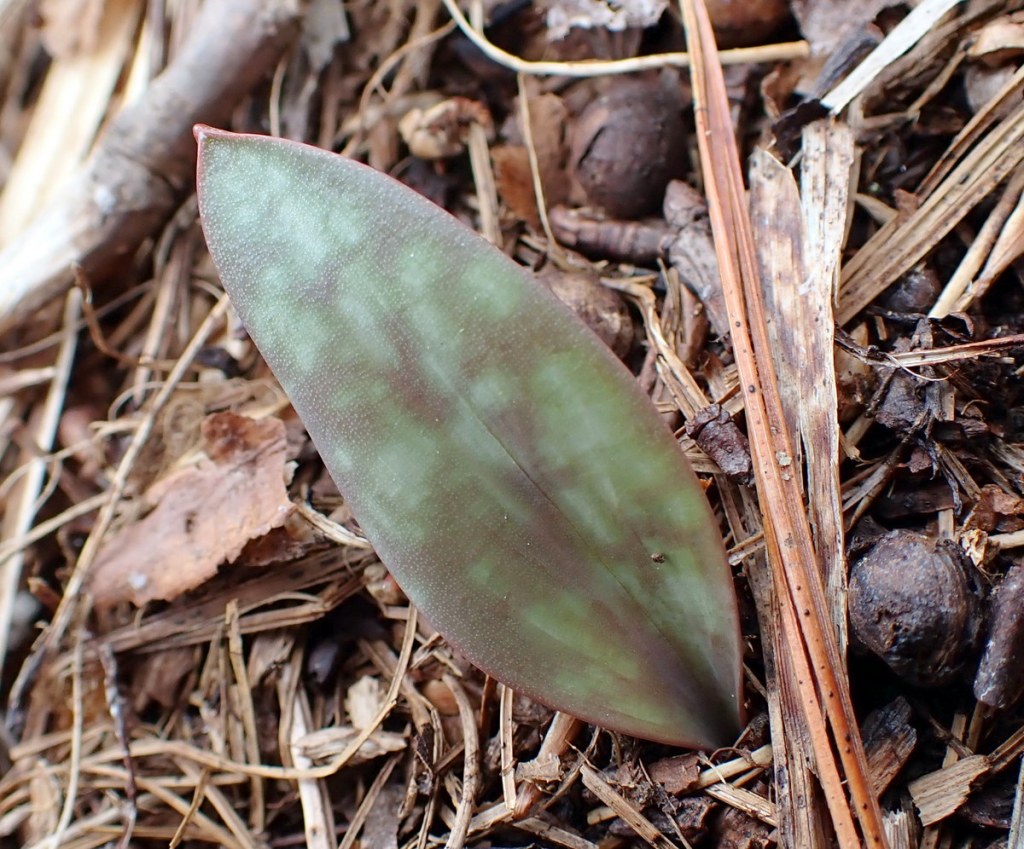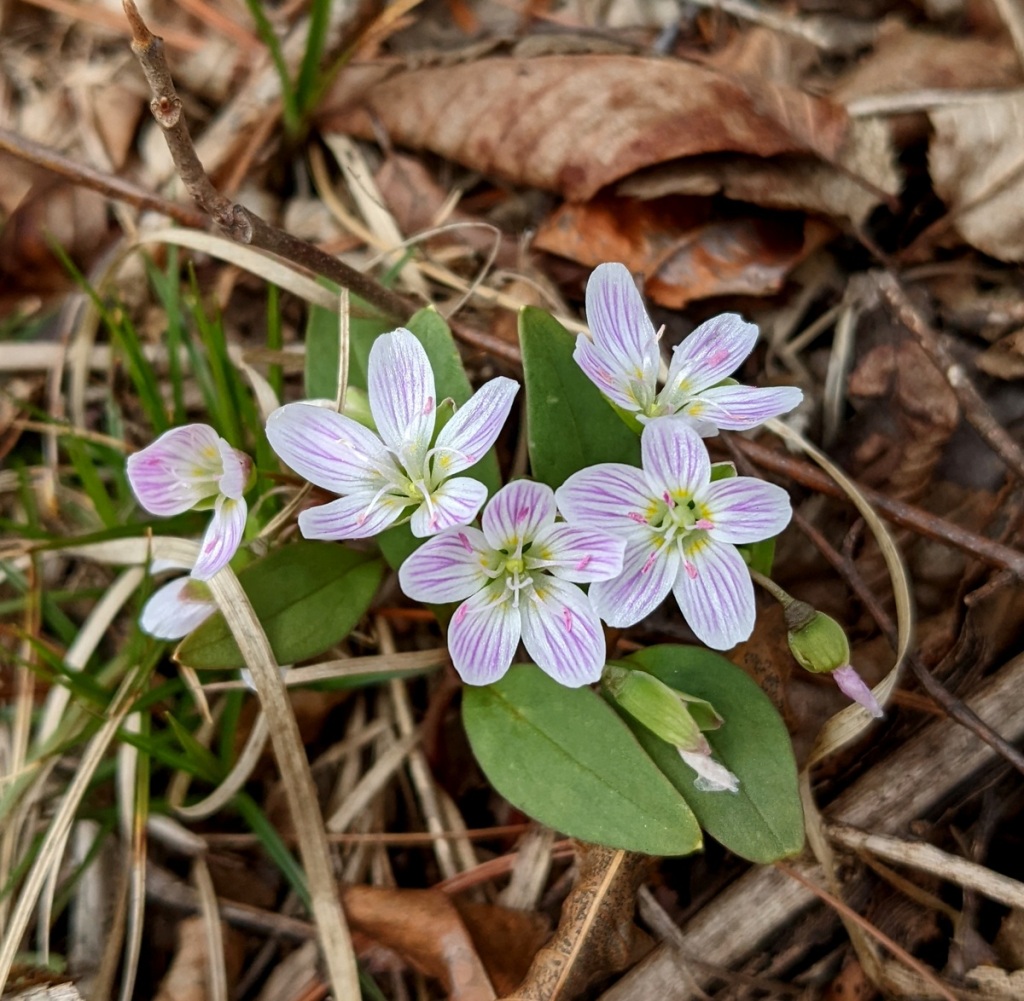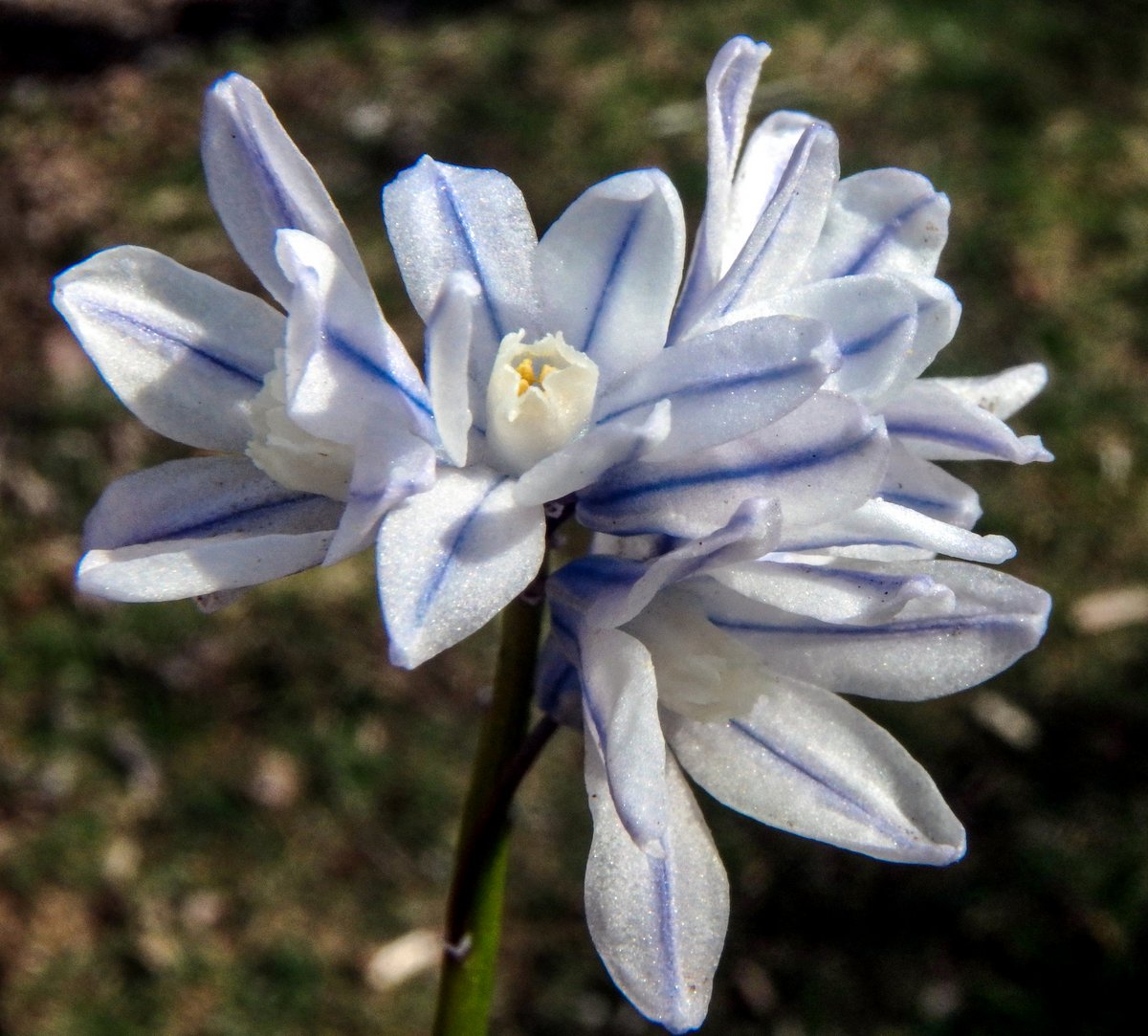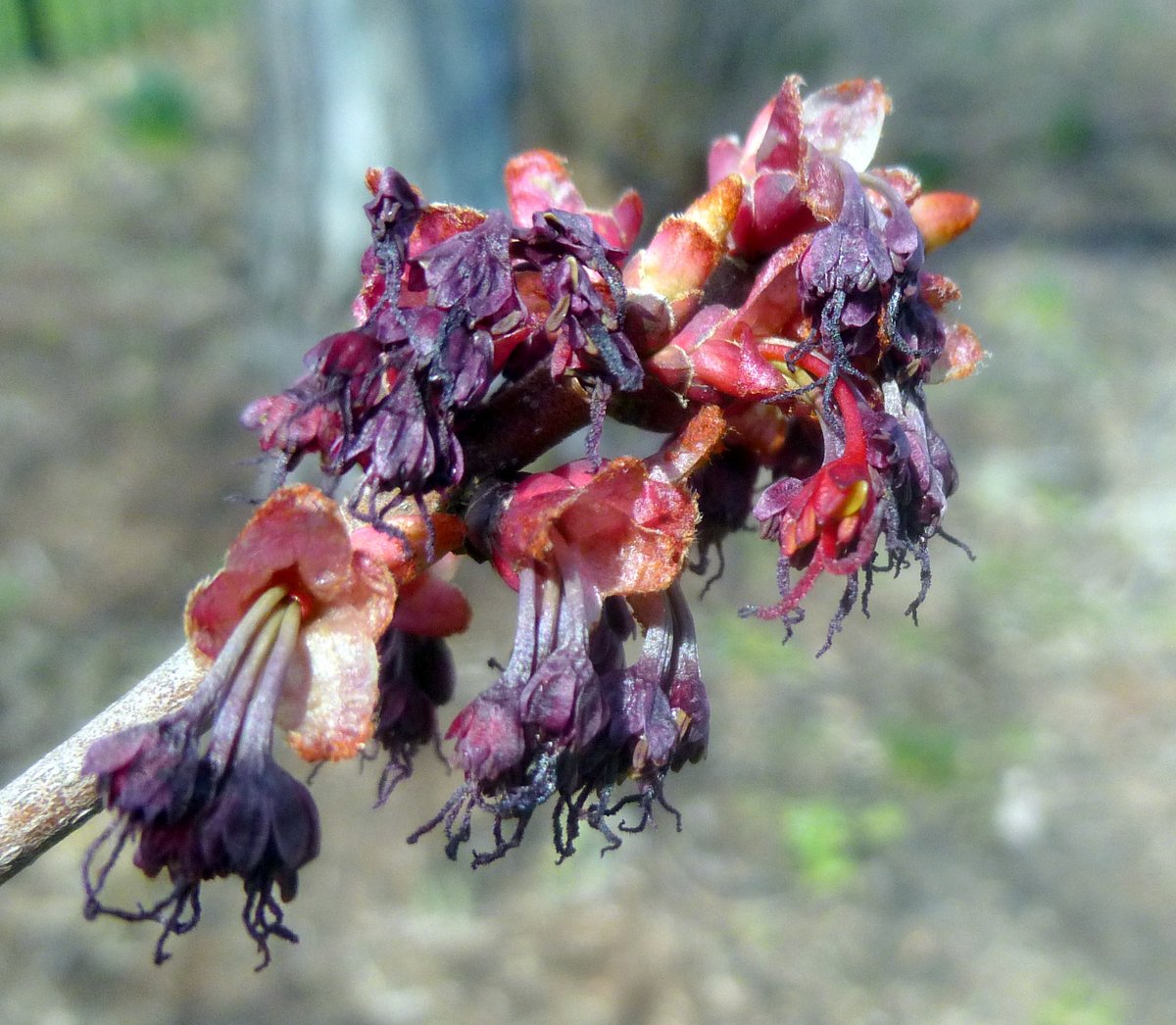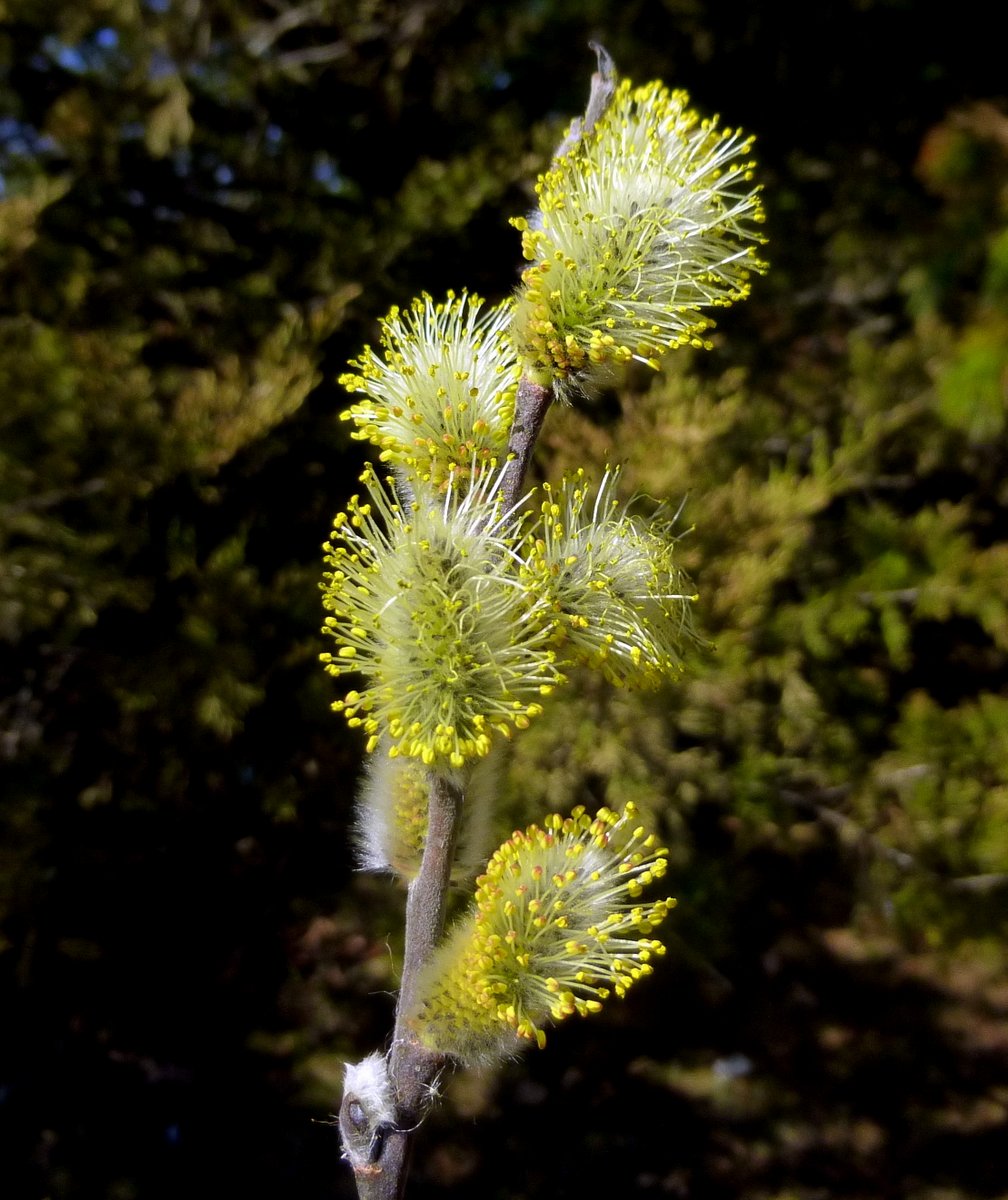
As this photo shows the crocuses have recovered beautifully from the snowstorm I showed in the last post. Spring flowers look delicate but they’re built for snow and cold. April is when the spring ephemeral wildflowers really get going so there will be lots to see this month, both in and out of the garden.

I had to get another shot of one of my favorite crocuses. I hope you aren’t getting tired of seeing them. It’s their shading that makes them so beautiful, in my opinion.
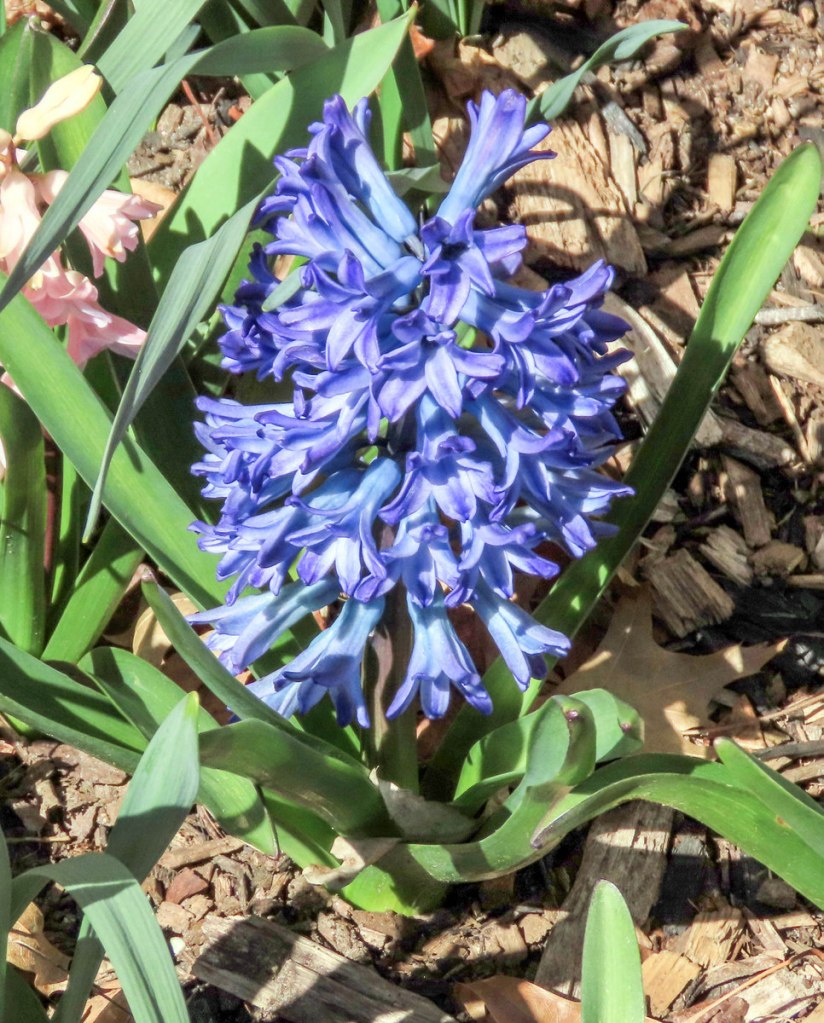
The hyacinths are out fully now and this one reminded me of a stalk full of scilla blossoms. The color and the shape of the flowers is similar.

I see so many flowers it’s impossible to pick a favorite, but one of my favorite spring flowering bulbs is striped squill. It looks a lot like a scilla in size but its flowers are white with blue pin stripes. I think for me it is their simplicity that makes them a favorite. It’s amazing how just a simple line on a flower petal can look so elegant and beautiful. They bloom at just about the same time as scilla and seeing both blooming together is a beautiful sight. Years ago when I started this blog they were very hard to find but now any good spring bulb seller will have them. Still, I know of only one place to see them blossom. It’s hard to believe that something so beautiful could be so under used. I think the answer is simply that since people don’t see them in gardens, they don’t know what they are and don’t know what to ask for. I’ve had countless people ask me about them over the years when they’ve seen me taking photos of them. Their Sunday go to meeting name is Puschkinia scilloides, but simply Googling “striped squill” will get you there. Take a look; you might fall in love with them as I did years ago.

The hellebores have fully opened now, even though this shot was taken a slightly before this one had.

I took these photos because I thought you might like to see what most people walk right by. There’s a lot going on in there.

The buds on the Japanese magnolias are showing color now. I think this one’s name is “Jane.” It will have bicolor petals that are dark on the outside and pure white on the inside. Some are pinkish like this one and others are purple. Their colors are very beautiful but the petals kind of flop around. They’re very different than the flowers on a star magnolia.

Once again glory of the snow refused to blossom until the snow had melted. I don’t know where its name came from but I do know that I’ve never once seen it blossom in the snow. I have seen almost every other spring flowering bulb bloom in the snow however, so this one’s name must have been more wish than fact. In the end it really doesn’t matter, because it’s a pretty flower.

I looked for bees on all the garden flowers and saw none. Then I looked at the dandelions and there they were. I don’t get too many shots of things in flight but this bee was indeed hovering over the flower.
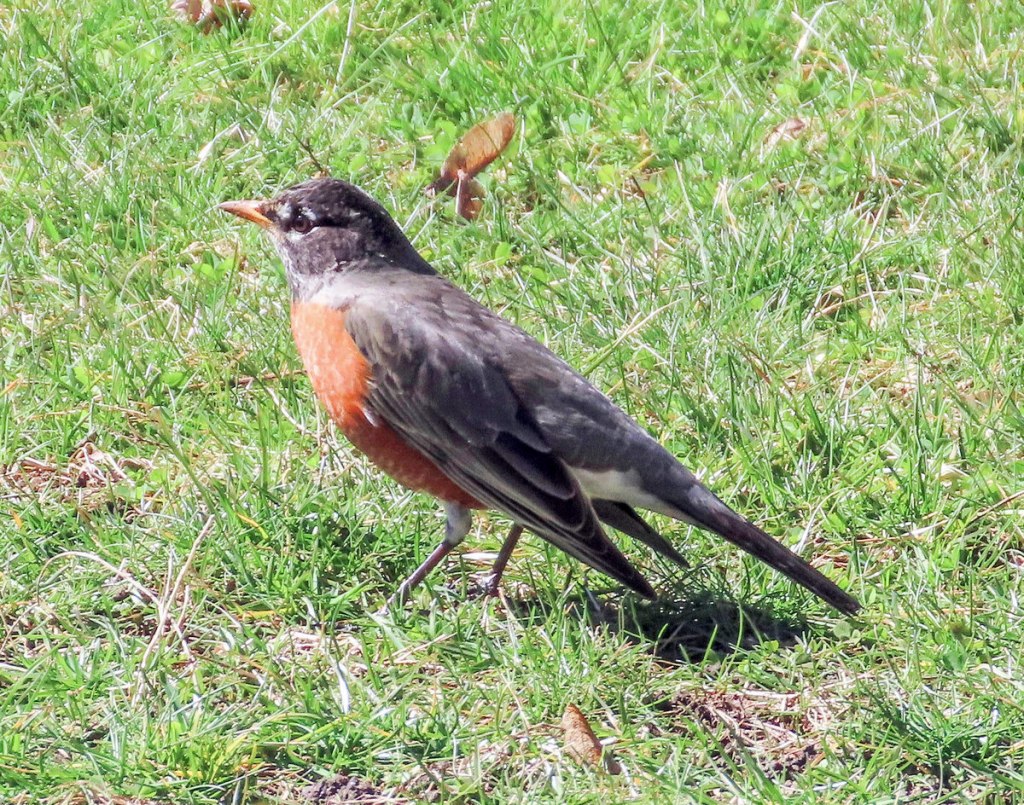
Robins used to be a reliable sign of spring but many stay here all year now so that isn’t entirely true anymore. What is a sign of spring when it comes to robins is when you see them pulling worms up out of the soil. That means the ground has thawed and is warm enough for the worms to come to the surface. It also means the soil is warm enough for spring wildflowers to start growing.

I was surprised to see this lilac’s bud scales had pulled back enough to reveal the flower buds within. It grows in a local park so I don’t know its name but I do know it will bloom earlier than any other lilac I’ve seen. We had a white lilac that my mother planted and that was the lilac that started me watching lilac buds in spring when I was a boy. I’ve watched them every year since. If you take a look at them once or twice each week they can tell you a lot about spring’s progression.

In a different park in a different part of town this lilac with its striking bicolor buds grows. I haven’t been able to find out its name yet but its buds have grown quite a lot since I last saw them.

I saw a Japanese maple in the same park that still had last year’s leaves on it. That isn’t unusual but the way they have held on to their fall color sure is.

I went to see a favorite red maple and found that many of its male flower buds had been killed by the cold. Those we see here should be bright red, not that dark, bruised purplish color. This tree blooms a little later than most others and is very pretty, but not this year.

This shot from a few years ago shows the same tree full of flowers. What makes it so beautiful is how almost all the flowers bloom at once and how the filaments hold the stamens out away from the flower clusters so they look like bright, red and yellow pincushions. This was the first red maple to show me how spicy the fragrance could be from a tree all in bloom. Before the leaves appear red and silver maples can be tough to tell apart so I just call any tree that looks like this a red maple. The tree doesn’t care what I call it and neither do I, so until the leaves appear it’s a red maple. Once the leaves appear it might have to graduate to silver.

Skunk cabbages are producing leaves now. This is when, for just a short time, the leaves actually look like cabbage leaves. Soon each plant will be huge, with a crown of leaves 3-5 feet across and thigh high.
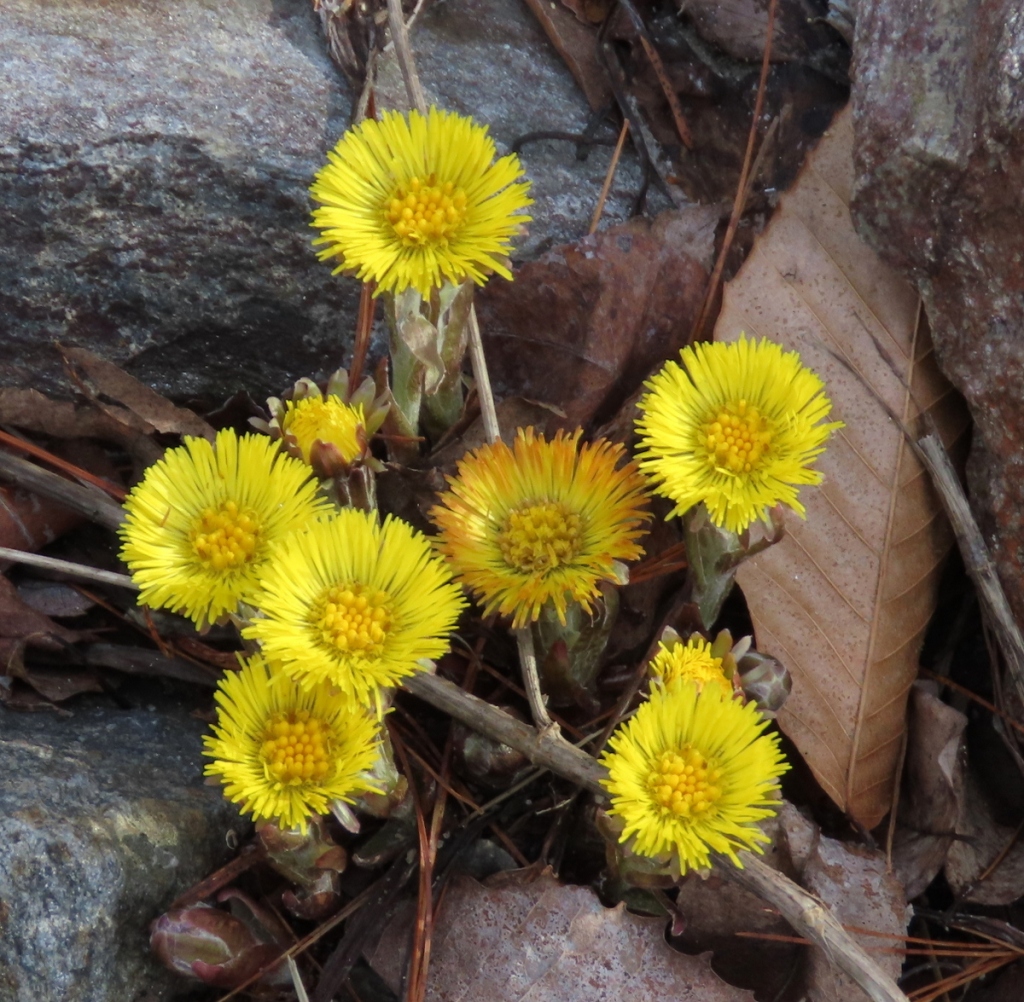
Coltsfoot flowers are everywhere now. Soon they’ll go to seed and have white cottony seedheads, and the leaves will start to appear. Spring ephemerals don’t stay around too long so to catch them you really have to get out there every day. Fleeting, is what they are.

There are a few plants that usually show fresh spring growth more or less at the same time, so when I see one I start to look for the others. They are plantain leaved sedge, seen above. Ramps, which are a kind of wild onion or leek. False hellebore, which is the most toxic plant in the spring forest. Skunk cabbage, spring beauties, bloodroot, and trout lilies.

They were a little hard to see in that previous photo but the plantain leaved sedge was full of new flower stalks like that seen above. Very soon now the butter yellow male flowers will appear at the top of the stem and the feathery white female flowers will blossom lower down on the same stem. Pennsylvania sedge is much more common and blossoms at about the same time. Pennsylvania sedge looks like clumps of grass growing here and there in groups on the forest floor.

I went to see the striped maples once again and found that all the bud scales had opened. Soon a large, velvety, pink and orange bud will appear from each pair of bud scales, and they’ll grow quickly. It’s hard to believe that all of the current year’s growth will appear from these small buds but it does.
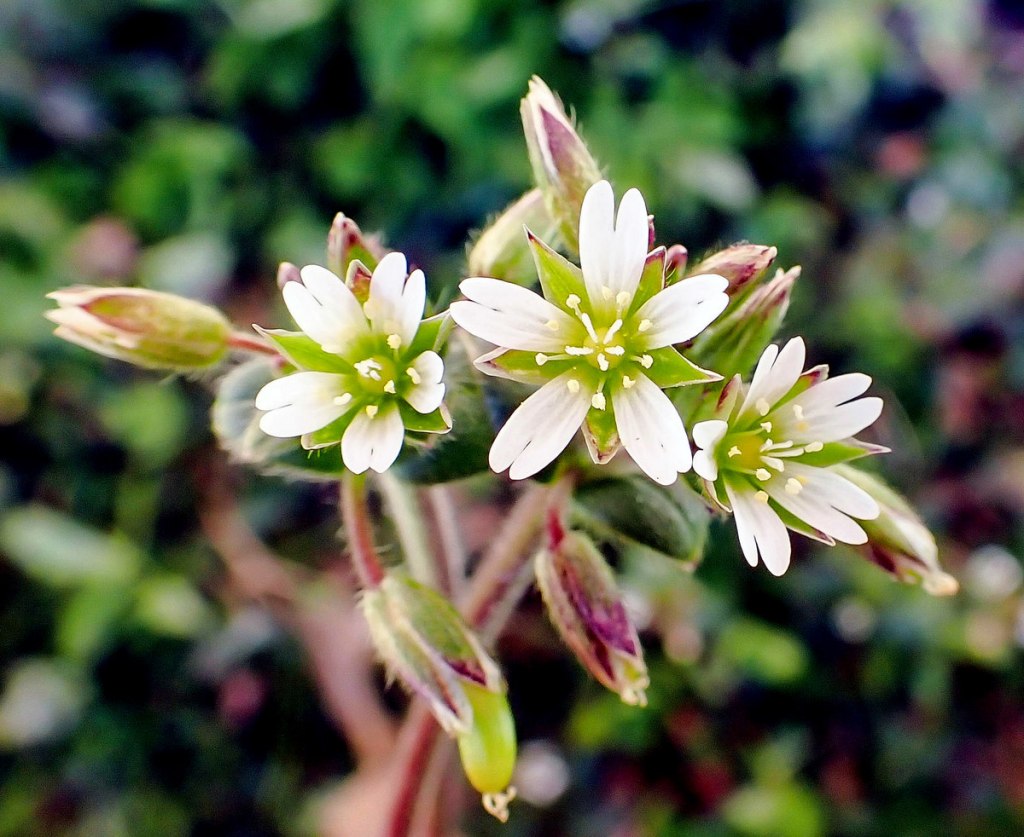
Mouse ear chickweeds have started blooming. They are also called sticky chickweed because of the sticky sap the hairy stems produce. They are usually one of the earliest spring flowers to appear, along with ground ivy and henbit. This plant is all about fives, with 5 white petals and 5 green sepals in a star shape behind them. At the time of this photo it was already producing seed pods, one of which can be seen below the flowers.

Ground ivy wasn’t bothered by snow. If anything it’s growing better than it was. Sometimes spring snow is called “poor man’s fertilizer” due to all the nitrates it drags down out of the atmosphere, and there is a lot of truth in that. This is from a website called “Farm and Dairy”: Nitrates are the result of nitrogen dioxide dissolving in moisture in the clouds. Precipitation pulls the nitrates down to the ground creating poor man’s fertilizer. Rain and snow both contain nitrogen, but snow by its nature provides a better delivery method. Nutrients are slowly released into the soil as the snow melts. This is especially effective early in the spring when the ground is thawed. Nature is a wonderful thing! (Actually it isn’t a thing, but I won’t get into that now.)

While I was crawling around admiring spring beauty blossoms I saw tiny green wood frogs jumping in the leaf litter and I heard the first spring peepers on this day. Wood frogs make a kind of quacking noise and spring peepers peep. Loudly. I’ve also seen wood ducks and mergansers eating lots of unknown insects that were hatching in ponds, and Canada geese acting like they were looking for nesting sites. Nature knows that spring is here, now if only the weather would agree.
On this past Thursday we had another spring snowstorm that dropped over a foot of snow in northern parts of the state and caused avalanches in the White Mountains, and downed trees and powerlines, but in my yard I saw barely three inches. It was like the last storm; heavy and wet, but the difference between this storm and the last was, it stayed warm enough so nothing froze this time. You may have heard about the “Major nor’easter slamming into New England” and I suppose that was true in places, but here it was just more poor man’s fertilizer.

I focused on this little blossom and it was as if the beauty of all the flowers I’ve ever seen came together, right here in this tiny blossom. I’m convinced that one thing this world will never run out of is beauty.
Treasures are hidden away in quiet places. They speak in soft tones and often become silenced as we approach. They don’t beg to be found, but embrace us if we do happen to find them. They are the product of completely ordinary circumstances unfolding in wonderfully extraordinary ways. They are found hidden in the nooks and crannies of our existence; all around us if we quit allowing our attention to be captivated by that which is noisy and listen for that which is quiet and still. ~Craig D. Lounsbrough
Thanks for coming by. I hope nobody lost power during the storm.








